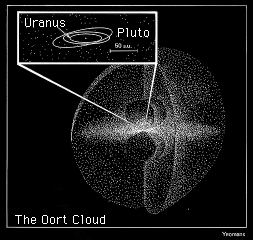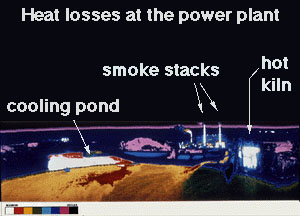Exploratour - Evolution of the Solar System
The Oort cloud is very far away. In this picture, the solar system is buried deep within the cloud. An AU is the distance from the earth to the sun and is roughly equivalent to 100,000,000 miles. Mars is 1.5 AU from the sun, Jupiter is 5 AU from the sun, and Pluto is 39 AU from the sun. The Oort cloud is 100,000 AU away. So comets come from very far away indeed.
It is natural to ask "How did comets get so far away?" Astronomers are presently working to understand the answer to that question. This is one reason NASA studies comets.
This is page 15 of 60












